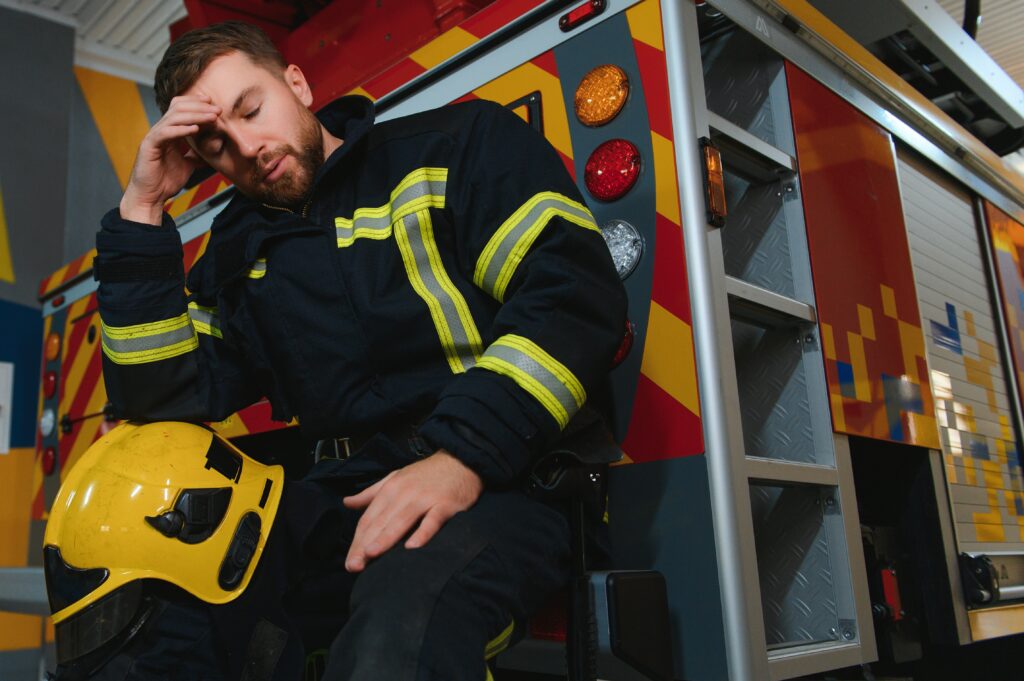
In 2024, Sensory Modulation Therapy (SMT) has emerged as a groundbreaking approach to help first responders manage the immense stress and trauma associated with their line of duty. This innovative therapy leverages sensory experiences to restore balance, reduce stress, and enhance coping mechanisms, making it an essential tool for those who serve on the front lines.
Sensory Modulation Therapy is an innovative approach designed for first responders. This therapy harnesses the power of sensory experiences to restore balance, reduce stress, and enhance coping mechanisms. It is a cornerstone treatment modality across many programs, offering a pathway to profound recovery and resilience.
The therapy is based on the principle that sensory input can significantly impact our neurological state. By engaging different senses, individuals can shift from a state of anxiety to one of neurological calm or increase their level of alertness. This makes it a versatile tool for managing stress and improving focus.
Sensory modulation is a great way to teach patients body-based stress management skills they can rely on after their discharge from therapy.

First responders are particularly vulnerable to trauma due to the nature of their work. They are often exposed to situations that are inherently dangerous and unpredictable, and they may have to make split-second decisions that can have life-or-death consequences. In addition, they may face pressure to suppress their emotions and maintain a tough exterior, which can lead to feelings of isolation and burnout.
Understanding the impact of trauma on first responders is essential for developing effective interventions to help them cope and recover. By recognizing the unique challenges faced by first responders, therapists can develop tailored approaches to therapy that address the specific needs of this population. This can include techniques such as EMDR, SE, and MBSR, which have been shown to be effective in reducing the symptoms of trauma in first responders. By rewiring neuropathways through therapy, first responders can enhance their overall well-being and effectively cope with the challenges of their demanding profession.
Understanding the intricate ways in which trauma triggers affect first responders is crucial in developing effective coping mechanisms and tailored trauma therapy interventions. By identifying the common triggers that evoke these distressing responses and delving into the associated emotional reactions, mental health professionals can craft personalized treatment plans that cater to the unique needs of first responders, paving the way for healing and resilience in the face of adversity.
Ultimately, by honing their emotional regulation abilities, first responders can enhance their overall well-being and effectively cope with the challenges of their demanding profession.

Sensory Modulation Therapy helps first responders by regulating the eight senses: sight, sound, touch, taste, smell, movement, body position, and internal sensations. This comprehensive approach ensures that all sensory inputs are balanced, which is crucial for maintaining mental and emotional stability.
One of the most significant benefits of Sensory Modulation Therapy is its ability to reduce stress and anxiety. By engaging in sensory activities, first responders can lower their stress levels and manage anxiety more effectively. This is particularly important given the high-stress nature of their work.
Sensory Modulation Therapy also enhances coping mechanisms, allowing first responders to better handle the impact of trauma. This therapy provides them with tools to manage their emotional responses and improve their overall resilience.
Ultimately, by honing their emotional regulation abilities, first responders can enhance their overall well-being and effectively cope with the challenges of their demanding profession.

To successfully integrate Sensory Modulation Therapy into first responder programs, a structured approach is essential. Begin with a comprehensive needs assessment to identify specific sensory challenges faced by first responders. Develop a tailored plan that includes training sessions, resource allocation, and continuous evaluation.
Training is a critical component for the successful implementation of Sensory Modulation Therapy. First responders should undergo specialized training to understand the principles and techniques of the therapy. Ongoing support and supervision are also necessary to ensure the long-term impact of the intervention. This can include regular workshops, peer support groups, and access to mental health strategies.
Numerous first responder agencies have successfully integrated Sensory Modulation Therapy into their programs. These success stories highlight the therapy’s effectiveness in reducing stress, enhancing coping mechanisms, and improving overall mental health. Agencies report significant improvements in their personnel’s ability to manage stress and trauma, leading to a more resilient workforce.
Implementing Sensory Modulation Therapy requires a commitment to continuous improvement and adaptation to meet the evolving needs of first responders. AM Health Care’s program for first responders, After Action, not only provides treatment for first responders, but also helps agencies install sensory rooms.
The future of Sensory Modulation Therapy (SMT) is bright, with continuous advancements aimed at enhancing its effectiveness for first responders. Cutting-edge technologies such as virtual reality and biofeedback are being integrated into SMT to provide more immersive and personalized therapeutic experiences. These innovations are designed to address the unique challenges faced by first responders, offering them new ways to manage stress and trauma.
Ongoing research is crucial for validating the benefits of SMT for first responders. Recent studies have shown promising results, indicating that SMT can significantly reduce symptoms of trauma and improve overall mental health. The department of occupational therapy collaborates with various agencies to conduct comprehensive research, ensuring that the therapy remains evidence-based and effective.
While SMT is currently tailored for first responders, its potential applications are vast. Future developments may see this therapy being adapted for other high-stress professions and even for the general public. The goal is to create a versatile therapeutic approach that can be customized to meet diverse needs, thereby broadening its impact and accessibility.
The project was inspired by the recognition that emergency situations can be particularly challenging for individuals with sensory sensitivities, developmental disorders, and other conditions. This highlights the importance of making SMT accessible to a wider audience.
First responders have shared numerous personal stories of recovery through Sensory Modulation Therapy. These narratives often highlight the profound impact of the therapy on their mental health and overall well-being. For instance, one firefighter described how the therapy helped him manage his stress levels after experiencing a particularly traumatic event. Another police officer noted that the therapy provided her with effective coping mechanisms to deal with the daily pressures of her job.
Sensory Modulation Therapy has the potential to create a culture shift in acute inpatient mental health settings towards person-centered care.
In 2024, Sensory Modulation Therapy stands out as a transformative approach for addressing the unique challenges faced by first responders. By leveraging the power of sensory experiences, this therapy helps to regulate the eight senses, reduce stress, and enhance coping mechanisms. The benefits of Sensory Modulation Therapy are evident in its ability to rewire neuropathways, thereby promoting profound recovery and resilience. As first responders continue to confront traumatic experiences, integrating this evidence-based therapy into their treatment programs offers a promising pathway to mental health and well-being. With the support of specialized programs like those offered by AM Health Care, first responders can find the tailored interventions they need to heal and thrive.
Sensory Modulation Therapy is a therapeutic approach that uses sensory experiences to help individuals regulate their emotions, reduce stress, and enhance their coping mechanisms.
This therapy works by engaging the eight senses (sight, sound, touch, taste, smell, movement, body position, and internal sensations) to help individuals achieve a state of calm and balance, which is particularly beneficial for those who have experienced trauma.
First responders often face high-stress situations and traumatic experiences. Sensory Modulation Therapy helps them manage stress, reduce anxiety, and improve their overall mental health by regulating their sensory responses.
Key components include sensory rooms, sensory tools (such as weighted blankets and fidget tools), and guided sensory activities designed to help individuals achieve a state of calm and focus.
Programs can integrate this therapy by setting up sensory rooms, providing training and support for staff, and incorporating sensory modulation activities into their routine mental health support services.
Research has shown that Sensory Modulation Therapy can effectively reduce symptoms of stress, anxiety, and PTSD in first responders, making it a valuable addition to their mental health care strategies.
